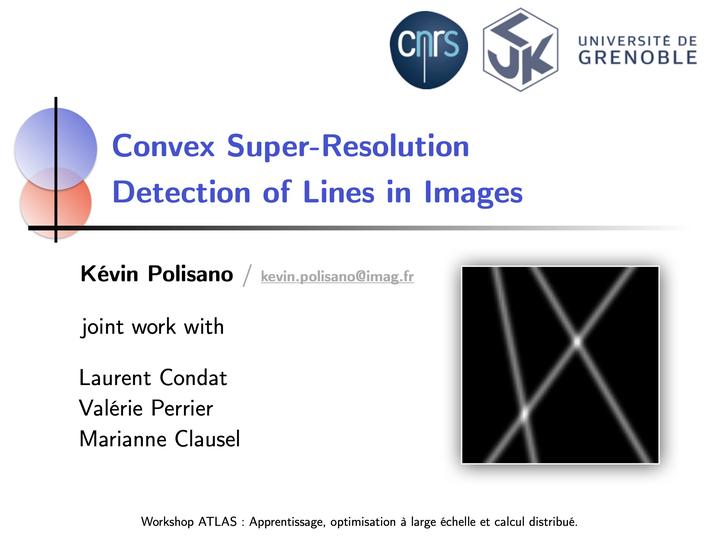Workshop JERAA 2016

Abstract
Recovering structures in images from lowpass and noisy measurements is a challenging issue of image processing. In this lecture, I will present a new convex formulation for the problem of recovering lines in degraded images. This optimization problem is formed by the combination of a data fidelity term and a norm-based regularizer which favors some notion of complexity. By choosing the atomic norm as penalty, we enforce the solution to be expressed in terms of atoms, lying continuously on a infinite dictionary, namely the set of line parameters. This parsimonious model enables the reconstruction of the lines from lowpass measurements, even in presence of a large amount of noise or blur. We solve the optimization problem by means of a recent primal-dual algorithm. Furthermore, a Prony method performed on rows and columns of the restored image, leads to a spectral estimation of line parameters, with subpixel accuracy. This approach is able to provides a lines estimation procedure with infinite precision, where the Hough and the Radon transform fail, due to their discrete nature. Our work is part of the super-resolution methods, which achieve this goal of recovering fine scale information lost in the data, beyond the Rayleigh or Nyquist resolution limit of the acquisition system. This kind of techniques have been intensively exploited to reconstruct 1D sparse signals like spikes, but not yet for 2D elongated structures like filaments, neurons and veins, which motivates the present work.
Link to the corresponding article.